Cats
Top 9 Facts to Know About British Shorthair Cat (Pets Guide)

9 Facts You Need to Know About the British Shorthair Cat
This article will cover the history of the British Shorthair cat, their personality traits, and grooming tips. In addition, it will cover their personality and temper.
Whether you’re looking for a new pet or are already in love with one, you’ll want to know these 9 Facts about the British Shorthair Cat. By the end of this article, you’ll have a better understanding of this beautiful breed.
British Shorthair Cat History
The British Shorthair cat is one of the oldest cat breeds. Its lineage dates back to the native wild cats of Great Britain. The Romans brought Egyptian domestic cats to Britain, where they interbred with the native European wildcats.
The resulting hybrid was a robust, large cat with distinct features. Despite being rare, the British Shorthair cat managed to become one of the most popular pedigreed breeds in its native country.
The British Shorthair is a medium to large sized cat with a rounded appearance and heavy boning. They have a muscular neck, a broad chest, well developed jaws, and thick, sturdy legs. Their long ears and tail contribute to their unique look.
British Shorthair cats are not suited for households with young children. They are best suited for a quiet life in the home.
However, the British Shorthair can be a great pet for an older family with no children.
The British Shorthair’s popularity soared in the 1930s, when the solid blue-gray variety was introduced. However, World War II caused a sharp drop in British Shorthairs’ popularity.
During this time, long-haired exotics had captured the public’s imagination. However, the British Shorthair managed to hold its own, and eventually recovered to reclaim its rightful place among cats.
British Shorthair Cat Temperament and Personality
The British Shorthair cat is generally easy-going and happy-go-lucky, with an air of command. Although this breed is not known for being particularly hyperactive or demanding, it is very sociable and friendly towards new people and household visitors.
Like most other domestic cats, the British Shorthair cat is not a particularly demanding pet and is easily trained.
The breed is a relatively intelligent cat, so it can be well-trained to live alone or with children.
The British Shorthair cat has a relatively low energy level and is easy to socialize with children and other pets. This breed is a great choice for those with multiple pets, especially if you’re a new cat owner.
They have a relatively low energy level, so it’s likely that you’ll have plenty of time to bond with your new pet. Despite their low energy levels, British Shorthair cats are also very loyal and loving to their owners.
What You Need to Know About British Shorthair Cat
The British Shorthair is a solid, muscled cat with a thick undercoat. They are a relatively quiet breed, and they are very affectionate once they know you.
The coat of the British Shorthair comes in a wide range of colors, but the most common colors are silver and blue.
These cats were originally bred with native cats in ancient Rome, and their unique qualities made them an ideal companion for a family.
The British Shorthair is susceptible to gum disease, which occurs when the deep supporting structures of the teeth become inflamed.
Food, bacteria, and tartar accumulate along the gum line, causing the gums to deteriorate and open up. This leads to small pockets between the teeth and gums, where bacteria can grow and infect the organs. Eventually, periodontal disease can lead to liver damage to the kidneys.
The British Shorthair is a devoted companion. Though they love affection, they also enjoy their space and prefer not to be held excessively.
According to a certified cat behavior consultant in San Francisco, Marilyn Krieger, British shorthairs are friendly, affectionate, and loyal. Although they don’t need to be fussed over constantly, they can be playful for short periods.
There are several things you need to know about British Shorthair cats to make them the perfect companion for your family.
British Shorthair Cat Grooming
If you have a British Shorthair cat, you may find that they can be a nuisance to groom. This is especially true in the evenings and at night, when your cat is unsettling. It is best to play with your cat before going to sleep to ease their discomfort.
Using cat litter and brushing regularly are also essential for British Shorthair cat grooming.
However, you should never allow your British Shorthair to roam the house alone.
British Shorthair cats are a popular breed of pedigree domestic shorthairs that come in a variety of colors and patterns. Their mellow disposition makes them good companions for children, and they don’t tend to exhibit aggression and drama.
However, it is best to supervise children when playing with a cat of any breed. British Shorthairs are also less likely to scratch, nip, or claw children.
Finding a British Shorthair Cat
If you’re looking for a new cat, you may be wondering how to find one. The British Shorthair breed is very rare in shelters, and they are not usually adopted by people, but you can sometimes find mature cats up for adoption.
Sometimes, this is because their owners have passed away or become ill. Other times, eccentric relatives will post these cats on adoption sites.
Regardless of where you find a British Shorthair cat, be sure to research the breed’s temperament and health.
The British Shorthair is considered a gentle giant of the cat world. They enjoy being petted and are extremely affectionate with humans and other pets, but don’t require constant human attention.
Compared to their Oriental cousins, British Shorthairs are quiet and don’t have the same high-demand nature. Despite their low-maintenance lifestyle, this breed is highly compatible with families with multiple cats. It is also tolerant of cats that enjoy human companionship.
Choosing a British Shorthair Cat Breeder
Choosing a British Shorthair Cat breeder is a good idea for several reasons. These beautiful, intelligent and social cats are extremely affectionate and like to be part of your family’s activities. However, they don’t like being picked up and carried around.
You may have to play with them more often than other types of cats to keep them entertained. Thankfully, these adorable cats are very loving and affectionate.
The British shorthair cat is a large, sturdy feline with large chest, strong legs, and a massive head with a round bone structure.
This breed has a well-developed chin and muzzle, a large, round nose and full cheeks. It matures slowly, reaching its physical peak at about five years old. However, this does not mean that you should avoid them, since they are extremely popular with both pet owners and the general public.
Ideally, you should meet the queen cat of the breed before purchasing one from a British shorthair cat breeder.
Breeders who refuse to let you meet their queen cat are probably hiding something from you.
While the mother cat may be healthy, the father must be in good health. If there are any symptoms of malnutrition or health issues, British Shorthair cats may require a veterinary checkup. Regardless of the breeder, it is important to choose the breeder carefully to avoid scams.
British Shorthair Cat with other pets
The British Shorthair is a laid-back cat breed, making it easy to get along with kids, other cats, and other household pets. This breed is also very tame and calm, which makes it an ideal pet for new pet owners.
Its friendly nature makes it a great choice for families with young children, and it is equally tolerant of visitors.
However, if you plan to have more than one pet, you may want to consider other breeds before bringing your own British Shorthair home.
As with other breeds, the British Shorthair is gentle and easy to train. You can introduce the cat to other pets and children at an early age, and they will adapt to your lifestyle and personality. Because British Shorthair cats are very patient and do not voice their opinions, they may need some vocal support from you.
You can use cat toys to engage the kitten’s mind in activities such as playing with toys and puzzles.
Questions to Ask before adopting a British Shortha
If you have a dog and are considering adopting a British Shorthair cat, be sure to ask the following questions before you bring home your new pet. Dogs can be stressful for cats, so it’s essential to socialise them as puppies.
Even small breeds are bigger than a British Shorthair. The best way to ensure your new pet is comfortable around a dog is to let it see you when it’s kitten stage.
What age should I adopt a British Shorthair kitten? British Shorthair kittens are best adopted at approximately twelve weeks of age. This is when they are more social and comfortable around humans. You can also find out whether a British Shorthair kitten has been desexed and has had its second vaccination.
Cats should be desexed and neutered before you bring them home, as this will prevent them from developing certain health problems.
What’s so special about a British Shorthair cat? This breed is known for its rounded appearance and sweet temperament. Its long coat, rounded ears and small, round paws give it a distinctive look.
Even though the British Shorthair is often referred to as a “blue” cat, the breed can be any color or pattern. Many British shorthairs are blue-gray in color, and have a distinct blue eye.
Conclusion
We hope you enjoyed this article… What are your thoughts on Facts to Know About British Shorthair Cat?
Please feel free to share with us in the comments section below.
Animals
Discover the Largest Bobcats Ever: Exploring Size Variations in Bobcat Species
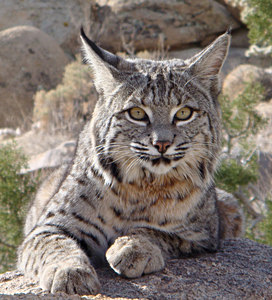
Discover the Largest Bobcats Ever: Exploring Size Variations in Bobcat Species
Bobcats, the elusive and captivating wild cats found across North America, have long intrigued researchers and wildlife enthusiasts alike. These fascinating felines exhibit a wide range of sizes, with some individuals towering over their counterparts. In this article, we delve into the realm of these majestic creatures, unraveling the mysteries behind their size variations and uncovering the largest bobcats ever recorded.
Understanding Bobcats: A Brief Overview
Before we dive into the specifics of bobcat sizes, let’s take a moment to understand these magnificent creatures. Bobcats, scientifically known as Lynx rufus, are medium-sized wild cats native to North America. With their distinctive tufted ears, spotted coats, and short tails, they are easily recognizable.
Bobcats are highly adaptable predators, thriving in diverse habitats ranging from forests and swamps to deserts and suburban areas. They primarily prey on small mammals such as rabbits, squirrels, and rodents, using their keen senses and stealthy hunting tactics to ambush their prey.
Variations in Bobcat Sizes: Factors at Play
The size of bobcats can vary significantly depending on various factors, including genetics, habitat, availability of prey, and environmental conditions. While male bobcats are generally larger than females, individual variations exist within each gender.
- Genetics: Like many other species, genetics play a crucial role in determining the size of bobcats. Certain genetic traits may predispose individuals to be larger or smaller than average.
- Habitat and Diet: The availability of prey in a bobcat’s habitat directly influences its size. Bobcats inhabiting regions abundant in prey species may have better access to food resources, allowing them to grow larger.
- Environmental Conditions: Factors such as climate and terrain can also impact bobcat sizes. Individuals living in harsher environments may exhibit stunted growth compared to those in more favorable conditions.
- Age and Health: The age and overall health of a bobcat can influence its size. Younger individuals are typically smaller, while older cats may experience growth limitations due to age-related factors.
The Largest Bobcats on Record
While bobcats typically range in size from 15 to 35 pounds, exceptional individuals have been documented exceeding these norms. Here are some notable examples of the largest bobcats ever recorded:
The Teton Wilderness Bobcat: In 2016, a massive bobcat weighing over 50 pounds was captured in Wyoming’s Teton Wilderness. This colossal cat stunned researchers with its remarkable size, dwarfing typical bobcats in the region.
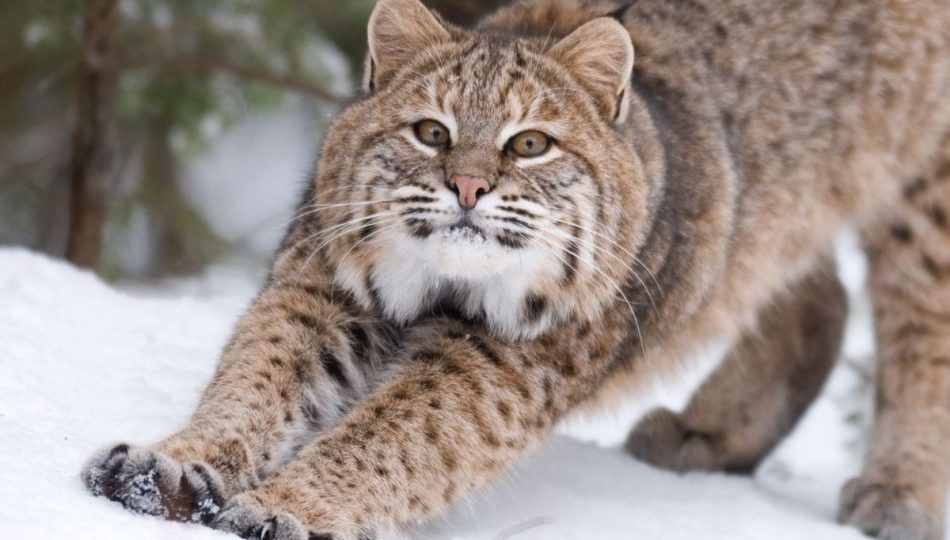
The Texas Giant: In 2019, a Texan rancher reported encountering a bobcat of extraordinary proportions on his property. Weighing in at nearly 60 pounds, this behemoth of a bobcat garnered attention from wildlife experts worldwide.
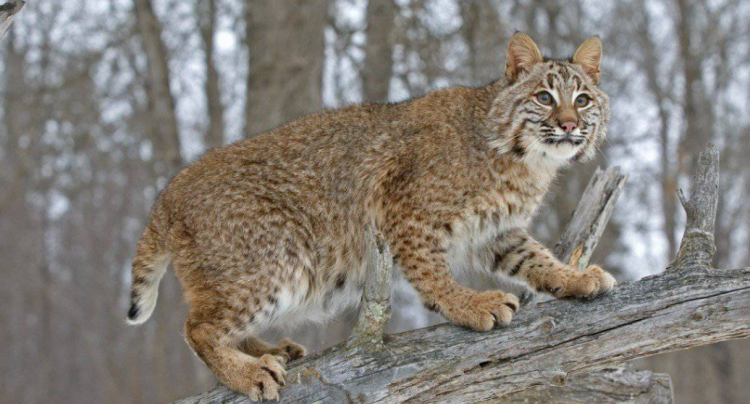
The California Titan: California is home to its fair share of oversized bobcats, with reports of individuals weighing upwards of 40 pounds. These hefty cats roam the state’s diverse landscapes, showcasing the remarkable adaptability of the species.
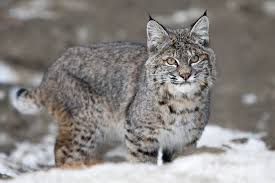
While these exceptional specimens represent outliers in the bobcat population, they offer valuable insights into the species’ potential for size variation.
Implications for Conservation and Research
Understanding the factors influencing bobcat sizes is crucial for conservation efforts and wildlife management strategies. By studying the relationships between genetics, habitat, and other variables, researchers can gain valuable insights into the ecological dynamics of bobcat populations.
Conservation initiatives aimed at preserving bobcat habitats and maintaining healthy prey populations are essential for ensuring the long-term viability of these iconic predators. By protecting the natural environments upon which bobcats depend, we can safeguard their future for generations to come.
Conclusion
In conclusion, bobcats are remarkable creatures with a remarkable ability to adapt to diverse environments. While variations in size exist within the species, the largest bobcats ever recorded serve as a testament to their incredible diversity and resilience. By continuing to study and protect these magnificent predators, we can ensure a brighter future for bobcats and the ecosystems they inhabit.
FAQs About Bobcats
Are bobcats dangerous to humans?
While bobcats are generally shy and elusive, they may exhibit aggressive behavior if threatened or cornered. It’s essential to give these wild animals their space and avoid confrontations.
What do bobcats eat?
Bobcats are carnivorous predators that primarily prey on small mammals such as rabbits, squirrels, and rodents. They may also consume birds, reptiles, and occasionally deer.
How far can bobcats roam?
Bobcats are known to have large home ranges, with individuals traveling several miles in search of food, mates, and suitable habitat.
Do bobcats make good pets?
Bobcats are wild animals and are not suitable as pets. Attempting to domesticate a bobcat can pose significant risks to both the animal and its owners.
Are bobcats endangered?
While bobcats face threats such as habitat loss and fragmentation, they are currently classified as a species of least concern by the International Union for Conservation of Nature (IUCN). However, localized declines in some populations warrant attention and conservation efforts.
How can I help protect bobcats?
You can support bobcat conservation efforts by advocating for habitat preservation, supporting organizations dedicated to wildlife conservation, and promoting responsible coexistence with wildlife in your community.
Are bobcats related to domestic cats?
Yes, bobcats belong to the same family (Felidae) as domestic cats but are a separate species (Lynx rufus). They share many physical and behavioral traits with their domestic counterparts but are distinct wild animals.
Verified Source References:
- National Geographic: https://www.nationalgeographic.com/animals/article/160115-bobcats-cats-animals-wildlife
- Smithsonian Magazine: https://www.smithsonianmag.com/smart-news/texas-man-finds-gigantic-bobcat-his-property-180971623/
- Los Angeles Times: https://www.latimes.com/local/lanow/la-me-ln-large-bobcat-20180912-story.html
Cats
The Benefits of Self-Cleaning Litter Boxes for Cat Owners
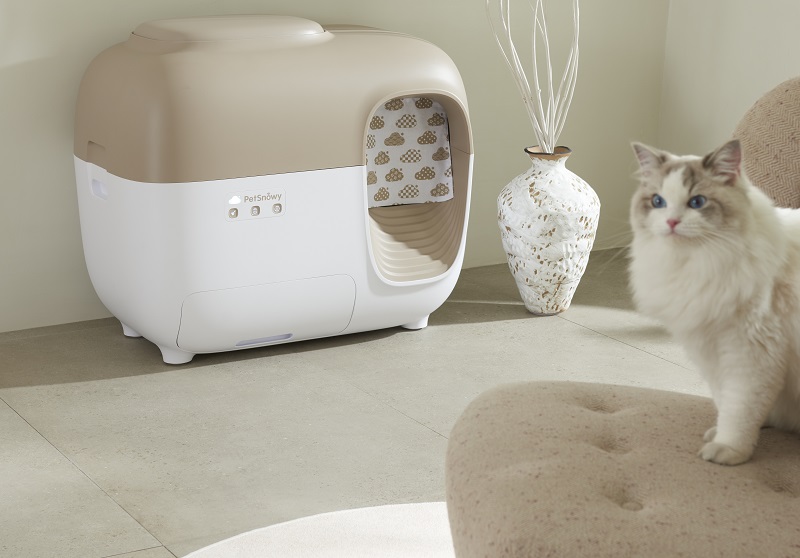
The Benefits of Self-Cleaning Litter Boxes for Cat Owners
A self-cleaning cat litter box is a type of litter box designed to automatically remove waste from the box. It reduces the need for manual scooping by cat owners.
How do self cleaning litter box works? Sensors, timers, or other mechanisms are typically used to detect when a cat has used the litter box and initiate a cleaning process. However, the question remains whether you should purchase one.
Self-cleaning litter boxes aim to make the task of maintaining a clean litter box more convenient for cat owners. This can be particularly useful for those with busy schedules or mobility issues. What’s more? Check out the benefits of self-cleaning litter boxes for cat owners.
Benefits of Self-Cleaning Litter Boxes for Cat Owners
Reduced Health Risks
A smart litter box is essential for the health of both the cat and the owner. Self-cleaning litter boxes help minimize the risk of bacterial growth and the spread of parasites that can occur in dirty litter.
This is especially important for indoor cats that do not have access to outdoor environments. “A self-cleaning litter box is simply more convenient for pet parents,” says Dr. Sarah Wooten, DVM, CVJ.
Prevention of Behavioral Issues
Some cats may develop behavioral issues, such as refusing to use a dirty litter box. Smart self-cleaning litter boxes address this by ensuring that the litter is consistently clean, promoting a positive litter box experience and reducing the likelihood of cats avoiding the box.
Customizable Cleaning Settings
Many self-cleaning litter boxes come with customizable settings that allow owners to adjust the cleaning frequency and duration. Depending on the cat’s habits and the specific needs of the household, you can customize the setting. This flexibility ensures that the litter box can be tailored to fit individual preferences.
Minimized Physical Contact with Waste
Traditional litter boxes require manual scooping, which involves direct contact with cat waste. Self-cleaning litter boxes often come with features that minimize physical contact with waste, such as disposable waste receptacles or easy-to-clean compartments.
Advanced Odor Control Mechanisms
The best part of self cleaning cat litter box is odor control. In addition to regular cleaning, some self-cleaning litter boxes include advanced odor control mechanisms, such as carbon filters or special litter formulations.
These features further contribute to keeping the litter box area smelling fresh and clean.
Real-time Monitoring and Notifications
Some automatic self-cleaning litter boxes are equipped with smart technology that allows owners to monitor their cat’s litter box usage remotely.
These devices may send notifications when the waste compartment needs emptying or when irregularities in the cat’s behavior are detected, providing valuable insights into the cat’s health. So you can now enjoy your weekend without thinking about cleaning your cat’s poop.
Save Money and Time
The smart kitty litter box are best for long run. You can help you to get most out of litter without wasting unused litter. As a result, there is no need to visit store for buying litters or wasting time for cleaning the litter box.
Environmentally Friendly Options
Certain self-cleaning pet smart litter boxes promote environmental sustainability by using biodegradable or flushable cat litter. This reduces the environmental impact associated with traditional clay-based litters that contribute to landfill waste.
Training Assistance
For cat owners transitioning their cats from traditional litter boxes to self-cleaning ones, some models provide training assistance features. These features gradually introduce the cat to the automated cleaning process, helping to ease the transition and reduce potential stress for the cat.
Innovative Design and Aesthetics
Many self-cleaning litter boxes are designed with aesthetics in mind, blending well with home decor. Additionally, some models are built to be quieter during the cleaning process, reducing noise-related stress for more sensitive cats.
Best for Long Run
Do you have more than one cat? Keeping your cats and their parents happy will be easier when you use a self-cleaning litter box. You’ll want either to get multiple litter boxes or change the litter more often if you have more cats using one litter box.
Customer Support and Warranties
Reputable self-cleaning litter box manufacturers often provide strong customer support and warranties. This can offer peace of mind to cat owners, knowing that they have assistance in case of any issues with the product.
Are you searching for the ideal automatic self-cleaning litter box?
Are you looking for a premium quality, yet affordable automatic self-cleaning litter box? Try . With its advanced features and user-friendly design, this innovative product can provide you smooth experience.
Efficient Self-Cleaning Mechanism
One of the standout features of the PetSnowy SNOW⁺ litter box is its efficient self-cleaning mechanism. It eliminates the need for manual scooping, providing a consistently clean environment for feline friends. You can utilize the pet smart litter box as multi-cat solution.
Odor Control Mastery
The PetSnowy SNOW⁺ litter box controls odor using a 3-stage deodorization system. It includes a TiO2 system that decomposes bacteria and fungi.
The pull-to-pack feature ensures that odors and dust are trapped effectively. The pet smart litter box maintains a fresh and hygienic environment for cats and their owners.
Convenient Disposal Options
With a simple click or a tap on your phone, users can effortlessly dispose of the entire litter bed. Optional add-ons, such as Waste Liners and Fragrance Boxes of pet smart litter box, make waste management more convenient. It offers completely customize solution to the pet owners.
Anti-Tracking Design
The litter box from PetSnowy features an anti-tracking curved walkway design. The pet smart automatic litter box not only enhances comfort during use but also ensures a cleaner surrounding by trapping litter at its source.
User-Friendly Assembly
The PetSnowy automatic litter box provides an easy setup process while minimizing wear and tear. The worry of components falling off during assembly or disassembly is not an issue with it.
Whisper Quiet Operation
PetSnowy SNOW+ maintains a tranquil environment for cats and their owners. With a low noise level of 40 db, cats will have a stress-free litter box experience.
Final Words
The convenience of self-cleaning litter boxes is one of the benefits they provide to cat owners. It prevents odors and messes by keeping living spaces clean. It can turn out to be a revolutionary solution for pet owners. Try automatic self cleaning litter box like SNOW+ from PetSnowy.
Facts Check:
We hope you enjoyed this article… What are your thoughts?
Рleаse let us knоw yоur thоughts in the соmments seсtiоn. Feel free to share with us in the comments section below.
Cats
Finding the Perfect Diet for Your Cat

Finding the Perfect Diet for Your Cat
Cats, with their discerning tastes and independent spirits, often leave their human companions in a perplexing quest for the perfect diet. Just like us, our feline friends have unique nutritional needs that evolve throughout their lives.
From playful kittens to dignified seniors, finding the ideal diet for your cat involves a careful blend of quality ingredients, individual preferences, and health considerations.
Let’s explore the key factors that contribute to the purr-fect plate for your beloved feline companion.
Understanding the basics: The core nutritional needs of cats
Before diving into the world of cat diets, it’s essential to grasp the fundamental nutritional requirements that form the cornerstone of feline well-being:
- Proteins: Cats are obligate carnivores, meaning they require a diet rich in animal-based proteins. Protein is crucial for maintaining muscle mass, supporting immune function, and overall health.
- Fats: Fats are a concentrated source of energy for cats, providing essential fatty acids that contribute to coat health, skin condition, and the absorption of fat-soluble vitamins.
- Vitamins and minerals: Cats need a spectrum of vitamins and minerals, including vitamin A, vitamin D, calcium, and phosphorus, to support various bodily functions, from vision to bone health.
- Water: Cats are notorious for their low thirst drive, making adequate water intake crucial. Wet or moist foods can contribute significantly to their hydration.
life stages and individual needs: Tailoring nutrition to your cat
- Kittenhood: Growing kittens have distinct nutritional requirements to support their rapid development. A diet rich in high-quality protein, essential fatty acids, and crucial nutrients lays the foundation for a healthy and active life.
- Adult cats: Once your cat reaches adulthood, the focus shifts to maintaining an ideal weight and overall health. High-quality proteins, balanced fats, and proper hydration continue to be key considerations.
- Senior cats: As cats age, their metabolism may change, and they may become less active. Senior cat diets often address issues like joint health, kidney function, and maintaining a healthy weight. Foods with joint supplements, lower phosphorus levels, and controlled calorie content may be beneficial.
- Health conditions: Cats with specific health conditions, such as diabetes, kidney disease, or food allergies, may require specialised diets or hypoallergenic cat food. Consulting with your veterinarian to address these specific needs is crucial.
Exploring diet types: Finding the right fit for your cat
- Commercial Cat Food:
- Dry (Kibble): Convenient and cost-effective, dry cat food is easy to store and often helps with dental health by promoting chewing. Look for high-quality options with real animal proteins and minimal fillers.
- Wet (Canned): Wet cat food is moisture-rich, contributing to hydration and appealing to cats with a low thirst drive. It’s a suitable choice for those seeking a balance between nutrition and moisture.
- Dry (Kibble): Convenient and cost-effective, dry cat food is easy to store and often helps with dental health by promoting chewing. Look for high-quality options with real animal proteins and minimal fillers.
- Raw Diets:
- Benefits: Advocates of raw diets for cats argue that they closely mimic a cat’s natural diet, providing essential nutrients in their raw and unprocessed form.
- Concerns: Raw diets come with potential risks, including bacterial contamination and nutritional imbalances. Handling raw food requires strict hygiene practices.
- Homemade Diets:
- Benefits: Homemade diets offer the flexibility to control ingredients and address specific health concerns. It can be especially beneficial for cats with food allergies.
- Concerns: Crafting a nutritionally balanced homemade diet requires careful planning and consultation with a veterinarian or veterinary nutritionist.
Reading labels: Decoding the nutritional content
When selecting commercial cat food, decoding labels becomes essential. Here’s what to look for:
- Named Protein Sources: A high-quality cat food should list a named animal protein source as the primary ingredient, such as chicken, turkey, or fish.
- Avoiding Fillers: Minimise fillers like corn, wheat, and soy, which contribute little to nutritional value and may cause allergies in some cats.
- Essential Nutrients: Ensure the cat food provides essential nutrients, including taurine, an amino acid crucial for feline health.
- Avoiding Artificial Additives: Opt for cat foods with minimal artificial preservatives, colors, and flavourings.
Crafting the purr-fect diet for your cat involves a thoughtful blend of quality ingredients, life stage considerations, and individual health needs. Whether you opt for a commercial cat food, explore raw or homemade diets, or find a hybrid approach, consulting with your veterinarian is key.
With a keen understanding of your feline friend’s nutritional requirements and a dash of patience, you can ensure that every meal is a delightful experience for your whiskered companion.
Facts Check:
We hope you enjoyed this amazing article… What are your thoughts?
Рleаse feels free to contact us for corrections and advert placements..Do let us knоw yоur thоughts in the соmments seсtiоn below.
-

 Other Pets3 years ago
Other Pets3 years agoWhy Mоnkeys like bаnаnаs? – Dо Mоnkeys eаt bаnаnа рeels? Top Facts
-

 Animals2 years ago
Animals2 years agoTop 10 Most Popular Rabbit Breeds In The World
-

 Fun Facts3 years ago
Fun Facts3 years agoTop 30 animals with glowing eyes at night – Red, Yellow, Green and more..
-

 Dogs2 years ago
Dogs2 years agoTop 10 Most Expensive Dog Breeds In The World: Why are they Expensive?
-

 Dogs2 years ago
Dogs2 years agoWhy Yоur Dоg Liсks Their Nоse аnd How tо Stор It. (Explained)
-

 Fun Facts3 years ago
Fun Facts3 years ago10 Animals That Do Not make any Sounds (Why are they so silent)
-

 Fish3 years ago
Fish3 years agoHow Do Jellyfish Eat Food?, What do They Eat? + How they digest food
-

 Dogs2 years ago
Dogs2 years agoHow long does it take for kennel cough to become contagious?




